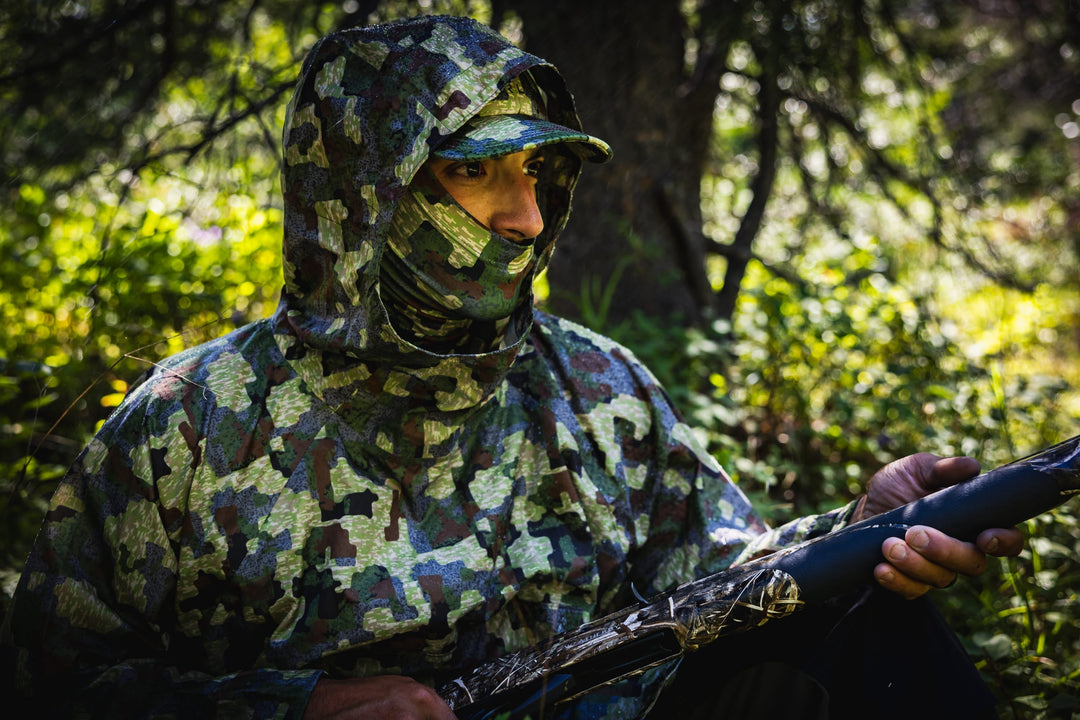After the craze of November deer hunting, many hunters decide to put away their bows and guns. Late season deer hunting has its unique challenges, but you’ve still got good chances of scoring a buck if you know a bit about deer behavior during the winter months.
Here are five top tips to punch a buck tag during the late season.
|
Table of Contents |
Learn How Late Season Bucks Behave
During the late season, bucks are recovering from the rut. They’re focused on feeding and finding warm shelter. The two places late season bucks are most likely to bed in are areas with good cover close to food sources and wooded south-facing slopes.
For the most part, late season deer are nocturnal creatures. They’ve altered their behavior to avoid human encounters, so they tend to spend the daylight hours under thick cover and feed at night.
Bucks will eventually come out of their hiding spots after about a week or so, and you’ll start to see them return to the routines and travel patterns they used during the pre-rut and rut.
Find Food Sources
As the temperature drops, deer go into survival mode and prioritize feeding to prepare for winter. This is especially true for mature bucks, who have just spent weeks chasing down breeding partners.
Deer will become settled into a consistent bed-to-feed pattern tied to the most attractive food source in the area, and you’ll have a great chance of scoring a buck if you identify this food source.
Common food sources include corn, soybean, brassicas, and cereal grains. To find the most popular one in your area, take some time after snow or rain to scout fields and potential food sources for tracks. Mature bucks will leave large, splayed-out tracks the size of four fingers held together.
You can also hang trail cameras in time-lapse mode over potential feeding areas or sit in an observation post and glass from a distance.
Without deep snow, deer can find fields with enough grain left from harvest. But if deep snow and ice prevent them from finding food on nearby fields, they’ll travel longer distances to find it. If you find one of the only food sources within a mile or more, you’ll pull deer from even more areas.

Pay Attention to Timing
By the time late season whitetail hunting hits, deer have been hunted for months, so they’re extremely wary of people and easily spooked. You should bide your time, carefully observe your buck, and plan a few well-timed strikes instead of just hunting the same spot over and over. This will likely lead to a spooked buck.
When planning your strikes, pay attention to the weather. Extreme cold fronts, heavy snow, and barometric pressure seem to trigger increased deer movement. If one of these weather events occurs and the wind is on your side, it’s a good time to strike.
Additionally, if you notice a buck you’re after has started moving during daylight hours, it’s time to strike.
During the late season, it’s typically better to hunt in the evening than in the morning. Deer will often be headed back to their beds or already in them before daylight, making it very challenging to sneak in for morning hunts without alerting them of your presence.
On the other hand, you can sneak in when deer are safely bedded in the evening and wait for them to come to you.
The best time to hunt public grounds is mid-week on Wednesday and Thursday when fewer hunters are in the woods and deer are comfortable moving.
Hunt Late Season Bucks’ Bedrooms
Most deer leave their nighttime feeding areas and move toward their daytime beds before sunrise. So, hunts near primary food sources are less likely to be successful in the morning than in the evening. Your chances of getting a buck are better if you follow the natural travel routes between his food and bedding area.
The sun is a magnet for bucks in the late season, so it’s a good idea to hunt the bedding areas that receive the first sunlight of the day.
Hunting during muzzleloader season is already tough, but late season bowhunting prevents even more of a challenge. The biggest issue is finding a tree within range with enough cover to conceal your movements, especially when you’re stalking a buck near a food source. You might need to get creative when looking for cover, like setting up a mobile box blind.
Wear Warm, Quiet Hunting Clothes
When deer are on edge during the late season, staying undetectable is absolutely essential. This means wearing quiet, comfortable, warm hunting clothes that control your scent. Noises like crunching boots and creaking tree stands tend to carry farther in the cold weather.

The Best Late Season Deer Hunting Gear
You want to stay warm, but you don’t want to feel restricted by bulky clothes, which is why layering hunting clothes is ideal.
Here’s the cold weather hunting gear you need in your layering system:
- Deep Space Base Layer Top: Start with a warming, scent-controlling base layer that diffuses moisture to keep you dry and comfortable.
- Deep Space Base Layer Bottom: The same goes for your bottoms. FORLOH’s base layers feature Trizar™ and Polygiene® Odor Crunch + Stay Fresh technology to keep you warm, dry, and undetectable.
- ThermoNeutral Down Jacket: Next is an insulating, waterproof, and packable midlayer.
- ThermoNeutral Down Pant: FORLOH’s down insulation layers feature Activ-Dri Down™ and Perf-Weld™ technology to stay dry and regulate your body temperature all day.
- AllClima Softshell Hunting Beanie: This beanie is waterproof, windproof, and provides advanced scent control.
- Merino Wool Boot Socks: Keep even your feet dry and comfortable with moisture-wicking, antimicrobial socks.








